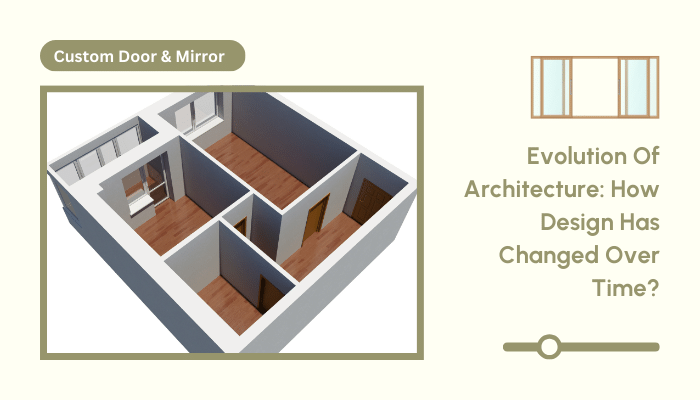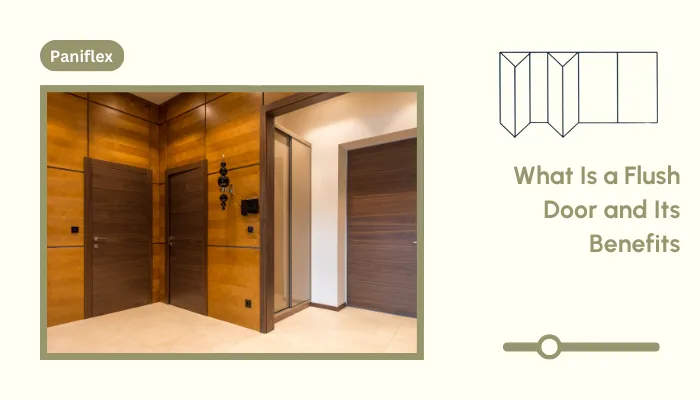Have you ever wondered how the buildings around us developed from humble shelters built out of necessity to skyscrapers that dominate our modern skylines? Architecture is much more than mere construction work; it’s a living testament to human ambition, culture, and the continually advancing tide of technological progress.
Over the centuries, architecture has changed with society’s needs, adopted innovative materials, and reflected the cultural ethos of each era.
Discover how Paniflex equips architects and designers with cutting-edge tools to turn vision into reality in some incredible ways by combining tradition with modernity.
Let’s take a journey through the enlightening history that unravels the extraordinary transformation of architecture and its immense impact on the world around us.
Early architectural foundations
In the beginning, architecture was used primarily for shelter. From cave dwellings, where natural refuge was found, to the simple wooden, straw, and mud huts, human ingenuity blossomed quickly to meet two needs: basic survival needs and cultural aspirations.
These developed into great structures which mirrored the advancements and aspirations of the societies. In the ancient world, such architectural innovation was pioneered by Mesopotamia, Egypt, Greece, and Rome.
- Symbolizing Eternal Legacy: The Egyptian pyramids stood as towering monuments of stone, which exemplified unrivaled engineering prowess as well as an intense understanding of spiritual beliefs.
With meticulous precision, the large structures took advanced knowledge of geometry as well as workforce coordination and symbolized the quest of the Pharaohs toward immortality.
- Celestial Alignment and Community Effort: Structures like Stonehenge emphasize communal efforts and sophisticated alignments with heavenly bodies. Ancient wonder Stonehenge was a place for ritual and calendrical functions that signified an understanding by the earliest humans of seasonal cycles in relation to the cosmos.
- Foundations of Classical Symmetry: Greek and Roman temples introduced classical architecture, a style that emphasized symmetry, proportion, and intricate detailing.
The Parthenon in Athens, with its Doric columns and mathematical precision, stands as a testament to ancient Greece’s artistic and intellectual achievements.
Roman engineering, on the other hand, introduced innovations such as the arch, vault, and dome, which are evident in enduring structures like the Pantheon.
Beyond their functional purposes, these early architectural marvels were profound symbols of power, religion, and community.
They embodied the values, beliefs, and aspirations of their creators, laying the groundwork for design principles that continue to influence modern architecture.
Want to enhance your projects with custom closet doors? Paniflex designs doors according to your specifications, ensuring perfect design and functionality in every detail.
So, how did the medieval transformations occured? Let us understand.
Medieval transformations
With changes in societies during the medieval era, architectural styles followed. The period of change has been interesting with the evolution from Romanesque to Gothic architecture, characterized by innovations and cultural significance:
- Fortified Serenity: The Romanesque style is characterized by massive, thick stone walls and round arches with meager ornamentation. Fortified structures, like the Abbey of Cluny, were places of worship and defense, reflecting the essence of security and stability. Barrel vaults and tiny windows were often employed to give an air of somber fortification.
- Reaching for the Heavens: Gothic architecture emerged during the later part of the medieval period and revolutionized construction with pointed arches, ribbed vaults, and flying buttresses. These innovations made structures taller and lighter, giving them an appearance of reaching toward the heavens.
Examples of such awe-inspiring cathedrals are Notre Dame and Chartres Cathedral. The use of stained glass windows became a hallmark, not only illuminating interiors with vibrant light but also narrating biblical stories and fostering spiritual reflection.
Castles also emerged during this era, which evolved from simple fortifications into complex structures that reflected power, prestige, and strategic ingenuity.
With towering walls, moats, and drawbridges, castles symbolized the feudal system and the need for protection during turbulent times.
Medieval architecture was crucial to the formation of societal structures. Cathedrals were the center of community life and religious worship, and castles were symbols of power and defense.
The attention to detail of those who built during this period shows that they never gave up on blending functionality with beauty, which has influenced architectural design to date.
Next up, we will discuss the revival of renaissance and Baroque architecture.
Renaissance and Baroque revival
The Renaissance marked a profound revival of classical ideals, bringing symmetry, proportion, and a human-centered approach to the forefront of architectural design.
This period was driven by a renewed interest in the philosophies and aesthetics of ancient Greece and Rome, where harmony and balance were celebrated as the highest expressions of beauty.
Architects like Michelangelo and Brunelleschi became pioneers of this transformative era, blending artistic brilliance with innovative engineering.
- Mathematical Precision and Spatial Harmony: The Renaissance period of grandeur celebrated order and proportion, emphasizing mathematical precision as well as spatial harmony influenced by ancient traditions.
One of the outstanding feats that Brunelleschi made on the Florence Cathedral, technically an engineering wonder, embodies the innovative genius of his time. In his making of a self-supporting structure, he embodied technique and artistic vision.
- Ornate Grandeur and Dynamic Movement: The Baroque followed, bringing dramatic, ornate designs to architecture that highlighted grandeur and dynamic movement.
Bold curves, elaborate decorations, and an intense interplay of light and shadow characterized this style. St. Peter’s Basilica in Vatican City is a monumental example of Baroque ambition, blending awe-inspiring detail with emotional intensity to captivate and inspire worshippers.
These architectural movements were not limited to Europe. Their influence spread all over the world, inspiring developments in art, science, and culture.
Renaissance ideals set the stage for intellectual growth, while the lavish designs of the Baroque period showed how architecture could bring about deep emotional and spiritual connections.
Together, they revolutionized the way humanity approached space, form, and function, leaving a legacy that continues to inspire modern architectural thought.
Now that we know about renaissance architecture and baroque, let us learn how the industrial revolution occurred.
The industrial revolution
The Industrial Revolution was a major turning point in architecture. It fundamentally changed the way buildings were conceptualized, constructed, and used. This period was characterized by rapid technological changes, urban growth, and the need for new kinds of structures to support industrial development:
- Revolutionary Materials and Transparency: New materials like iron, steel, and glass enabled architects and engineers to push the limits of design. Iconic structures like the Eiffel Tower and the Crystal Palace show how these new materials provided unprecedented scale and transparency to strong and aesthetic structures.
- Infrastructure and Urban Transformation: The need for infrastructure transformed the urban landscape. Train stations, like St. Pancras in London, and factories became the epitome of functionality and scale in architecture. They were not only practical but also symbols of progress and innovation.
- Vertical Expansion and Skyscrapers: The advancement in steel-frame construction led to the appearance of skyscrapers, which fundamentally changed the skylines of cities. The Home Insurance Building in Chicago is often regarded as the first modern skyscraper, ushering in a new era of vertical expansion.
- Blend functionality with beauty: Architecture shifted toward practicality and efficiency, prioritizing function over form. However, the complete abandonment of aesthetics never occurred.
Innovative designers managed to balance utility and aesthetic appeal. A very good example is the Brooklyn Bridge.
This era proved how technology and industrial needs could redefine architectural possibilities. Buildings were no longer just spaces but symbols of human ingenuity, resilience, and the drive to innovate in an ever-changing world.
Have a problem with non-standard openings? Paniflex offers flexible, adjustable doors that can fit any space, which can save money on costly modifications.
Now comes the modernist movement. Let us find out how it came about.
The modernist movement
The 20th century brought modernism, a radical departure from traditional architectural styles. Modernism was characterized by a commitment to simplicity and functionality and the belief that architecture should directly respond to the needs of modern society. Architects like Le Corbusier and Frank Lloyd Wright championed the principle that “form follows function,” emphasizing practicality over ornamentation.
- Simplicity and Functionality: Modernist design became known for its minimalism and clean lines. Movements such as the Bauhaus in Germany, for example, embody this ethos.
They focus on simplicity, utility, and the union of art and industry. Architectures like the Bauhaus Building in Dessau depict how architecture can be both aesthetic and practical.
- Vertical Urban Icons: Skyscrapers epitomized the pace of urbanization and economic prowess of the 20th century. Iconic examples of skyscrapers included the Empire State Building and the Chrysler Building, towering heights made possible by the introduction of steel frames and elevators, changing city skylines, and redrawing the map of living in cities.
- Industrial Innovation: The use of steel, concrete, and glass allowed architects to build bigger, more efficient, and innovative designs.
Le Corbusier’s Villa Savoye is an example of using industrial materials to create functional spaces with a modern look.
- Harmonizing Nature and Design: The introduction of open floor plans and the rejection of historical styles marked a change. Wright’s Fallingwater, for example, integrates the natural environment with contemporary design principles, demonstrating harmony between human habitation and landscape.
Modernism was an ideology that wanted to break away from the past with design solutions to the needs of a rapidly urbanizing world as beautiful as they were efficient. It redefined architecture as a medium of social progress and technological innovation to set the stage for the contemporary architectural landscape.
Postmodernism and contemporary architecture
Postmodernism freed itself from stiff modernism and adopted eclecticism, experimentation, and playful designs.
Famous architects like Frank Gehry challenged traditional forms to introduce expressive and unconventional forms, such as the Guggenheim Museum in Bilbao, which changed how architecture could interact with the environment and inspire creativity.
This period encouraged mixing styles of the past with modern techniques to create a dialogue between the past and present.
- Sustainability as a guiding principle: In the present times, architecture is more or less sustainability-sensitive. Sustainable materials, high-efficiency systems, and innovative green approaches have become the core of today’s design.
Renewable resources coupled with smart technology enable buildings to make a better fit with their environment and minimize ecological footprints.
- Structures like Bosco Verticale in Milan epitomize the union of greenery and architecture. They include vertical forests that improve air quality and enhance urban biodiversity.
- Examples include solar panels, rainwater harvesting systems, and energy-efficient facades, which modern architecture uses to demonstrate its concern for environmental issues.
Contemporary designs seek a balance between aesthetic appeal, functionality, and environmental awareness. They reflect changing needs in a world in transition and depict an interest in creating environments that are not only aesthetically pleasing but also sustainable and adaptive to the challenges of modern living.
Now that we understand much about the evolution of architecture, let us discuss the role of technology in architecture.
Technology’s role in architecture
Advances in technology have revolutionized architectural practices by introducing tools and methods that were once the stuff of imagination. These innovations have transformed not only how architects design but also how projects are executed and experienced:
- Precision and Efficiency through CAD and 3D Printing: Tools such as CAD (Computer-Aided Design) and 3D printing enable very precise and efficient designs. CAD allows architects to create detailed blueprints and simulations, which significantly reduces errors and saves time during the design and construction phases.
On the other hand, 3D printing added a new dimension to architecture, making it possible to create detailed models and even construct building components directly from digital designs.
- Virtual reality (VR) and augmented reality (AR): These are really transforming client interactions and design. VR allows architects and clients to dive inside a project, walking around virtual spaces to view how it looks, feels, and feels materials and light intensity before anything gets built.
The design becomes interactive and, therefore, highly collaborative, and always checks for design decisions based on the client’s wishes.
- Creative Innovation through Computational Design: The process of computational design and parametric modeling has opened new doors for creativity.
Algorithms produce innovative forms conditioned by environmental, structural, and aesthetic requirements. Depending on the building’s orientation, parametric tools can optimize the designs for energy efficiency or maximization of natural lighting.
- Streamlined Collaboration with BIM: Technologies like Building Information Modeling (BIM) have streamlined project management, enabling architects, engineers, and contractors to collaborate on a single digital model.
This integrated approach reduces conflicts during construction and ensures a more cohesive execution of complex projects.
From conceptualization to execution, technology is pushing the boundaries of what architecture can achieve and merging innovation with efficiency in a new way of reshaping our built environment.
Want to save time and effort? Paniflex doors are easy to install, reducing labor costs and time.
So, how do we ensure sustainable architecture and green building? Let us find out.
Sustainable architecture and green building
Sustainability is no longer a choice, but an imperative in building the landscape. Architects and urban planners are adopting proactive, ecological approaches to combating climate change and promoting sustainable, long-term ecological balance.
Aesthetic considerations alone cannot lead to such practices. It needs functionality, environmental stewardship, and human well-being in a balanced package.
- Nature-Inspired Biomimetic Designs: Biomimetic designs mimic natural environments, creating harmony between buildings and their surroundings.
Inspired by biological structures like termite mounds, such designs utilize natural ventilation systems to regulate temperature efficiently, reducing energy consumption. Other examples include roof gardens and facades inspired by leaf patterns to optimize sunlight absorption and water retention.
- Green Urban Planning Innovations: Green urban planning incorporates renewable energy sources, sustainable transport networks, and abundant green spaces into urban landscapes.
Cities like Singapore have adopted vertical gardens, urban forests, and smart irrigation systems to combat urban heat and improve air quality, setting a global standard for sustainable urban design.
- Core Focus on Energy Efficiency: The core of the new sustainable architecture is energy-efficient systems. Such features include solar panels, geothermal heating, and smart energy grids to ensure that buildings are minimal in their energy consumption but renewable in power.
- Sustainability Benchmarks and Certifications: Certifications such as LEED (Leadership in Energy and Environmental Design) and BREEAM are benchmarks for sustainable building practices.
Such certifications evaluate structures on criteria such as energy efficiency, water usage, material sourcing, and indoor air quality, which makes architects and developers strive for the highest standards in eco-conscious design.
These strategies avoid environmental issues and create good living conditions for its citizens. Sustainable architecture produces better lifestyles, reduces the need to rely on resources, and supports global efforts toward creating a more balanced climate change world for future generations to inherit.
How does the future of architecture looks like? Here’s how.
The future outlook
What the future holds for architecture. There is a promise of innovative solutions that are sustainable and responsible:
- Revolutionizing Building Materials: Carbon-neutral building materials and modular designs are the future, as this will address urgent climate challenges. Self-healing concrete, bio-based materials, among others, can transform the construction industry by reducing emission and extending the life cycle of buildings.
- Prioritizing Human Well-being: Human-centered design will shape spaces that are of a stronger focus on priority well-being. These would include designing environments that enhance mental health, promote community interaction, and adapt to the evolving needs of diverse populations. Features like biophilic design, which is an integration of natural elements, may find their way increasingly into spaces.
- Emerging Technologies: Emerging technologies, including AI and robotics, will redefine the way we conceptualize and execute architectural projects. For instance, AI could analyze environmental data to optimize designs for energy efficiency, and robotics may streamline construction processes with increased precision and reduced costs.
- Smart and Responsive Cities: Smart cities will take over urban development, embedding IoT devices to create responsive and adaptive environments. Data-driven solutions will be applied to traffic management, energy distribution, and public safety in these cities, thereby making the quality of life of their residents better.
- Sustainable Adaptation: Adaptive reuse of existing structures will gain increased importance. This is sustainable in the sense that older buildings are reused rather than destroyed, hence saving on resources, thereby conserving a piece of history and culture.
Paniflex’s floor-to-ceiling designs provide maximum storage while making interiors more beautiful.
The art of architecture will evolve in ways that balance aesthetics, sustainability, and human needs, challenging our understanding of what buildings can do. The future of architecture is not about making spaces; it’s about making experiences and solutions that are consonant with the values of a changing world.
Conclusion
From the ancient pyramids to the smart buildings of today, architecture is one that writes the story of human progress. It transforms, innovates, and reflects cultural and technological change over time, adapting itself to fulfill the changing needs of society. Every generation, with its own battles and triumphs, adds to this rich tapestry of architectural ingenuity and shapes the way we live, work, and interact.
As we look at the future, this time ensuring sustainability and human-centered designing, architecture will be called upon to continue inspiring, serving, and humanity itself. As this includes marrying cutting-edge technology, giving importance to preserving cultural heritage, and setting an exemplary example in the preservation of the environment, architecture has been the creative spark behind positive change, for long generations ahead.
Discover how Paniflex‘s cutting-edge solutions are shaping the future of architecture. They enable architects to build sustainably and creatively in an ever-changing world.






